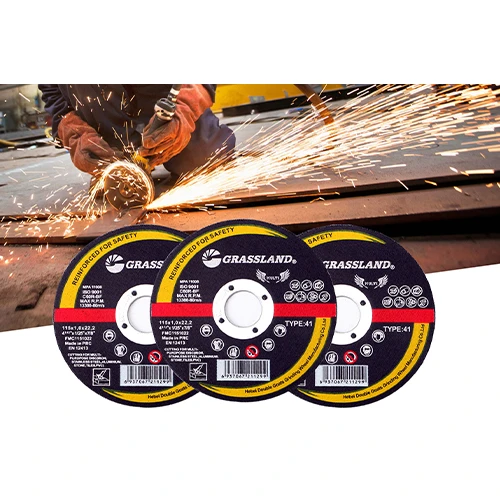Understanding Aluminum Cutting Wheels A Comprehensive Guide
Aluminum cutting wheels are a crucial tool in the metalworking industry, renowned for their efficiency and precision when cutting aluminum and related alloys. As the demand for lightweight materials in various industries continues to rise, the importance of specialized tools like aluminum cutting wheels has become increasingly pronounced. This article explores the types, features, applications, and best practices of aluminum cutting wheels.
What Are Aluminum Cutting Wheels?
Aluminum cutting wheels are high-performance abrasive discs designed specifically for cutting aluminum and non-ferrous metals. Unlike general-purpose cutting wheels, these are formulated with specialized abrasive materials that enhance their effectiveness and durability when working with softer, more ductile metals like aluminum. The wheels typically consist of a fibrous backing that provides strength, with an abrasive layer made from materials such as aluminum oxide or zirconia.
Types of Aluminum Cutting Wheels
There are several types of aluminum cutting wheels available in the market, each engineered for specific applications
1. Thin Cutting Wheels These wheels are generally 1/16 inch or less in thickness. They offer quick cutting speeds and reduced material loss, making them ideal for detailed work and precision cuts.
2. Thick Cutting Wheels Typically thicker than 1/16 inch, these wheels are designed for heavy-duty cutting applications. They provide greater stability and are less prone to breakage, making them suitable for larger, more robust materials.
3. Diamond Cutting Wheels Infused with diamond particles, these wheels are designed for cutting harder materials, including some aluminum alloys. They provide extended life and durability, making them a worthy investment for high-volume cutting tasks.
4. Specialty Cutting Wheels Some cutting wheels are designed specifically for unique applications, like aluminum with coatings or anodized finishes. These wheels may incorporate special abrasives to prevent clogging and enhance cutting efficiency.
Features to Consider
When selecting an aluminum cutting wheel, several factors should be considered
- Bonding Materials The bonding agent used in the wheel affects its strength and performance
. Resin bonds are common for aluminum cutting wheels since they provide flexibility and reduce wear.aluminum cutting wheel

- Grain Type The type and size of abrasive grains used in the wheel determine its cutting performance. Finer grains offer smoother finishes, while coarser grains provide faster cutting speeds.
- RPM Rating Each cutting wheel has a maximum RPM rating that indicates its safe operating speed. Always ensure that the wheel matches the specifications of the grinder to prevent accidents.
- Grit Size Grit size determines the smoothness of the cut. For aluminum, a medium grit (around 36 to 60) is typically suitable for general cutting, while finer grits (80 to 120) are better for finishing work.
Applications of Aluminum Cutting Wheels
Aluminum cutting wheels are used in a variety of industries and applications, including
- Manufacturing Essential in the production of aluminum parts, these wheels help cut extrusions, sheets, and other forms of aluminum with precision and efficiency.
- Automotive In the automotive industry, aluminum cutting wheels are used for fabrication and repair work, particularly due to the increasing use of aluminum components in modern vehicles.
- Construction Aluminum is often used in construction for its light weight and corrosion resistance. Cutting wheels play a vital role in the fabrication of structures and fixtures.
Best Practices for Use
To maximize the performance and lifespan of aluminum cutting wheels, consider these best practices
- Always use the correct wheel for the job; avoid using wheels that are not specifically designed for aluminum. - Maintain proper RPM settings to prevent overheating and premature wear. - Use sufficient coolant or lubrication when cutting to reduce friction and prevent the wheel from clogging. - Inspect wheels regularly for damages or wear and replace them as necessary.
In conclusion, aluminum cutting wheels are an indispensable tool in various metalworking applications. Understanding their types, features, and best practices can enhance your cutting efficiency and ensure the safety and quality of your work. As industries continue to adapt to new technology and lightweight materials, the importance of these specialized tools will undoubtedly grow.
Post time:Jan - 02 - 2025

















